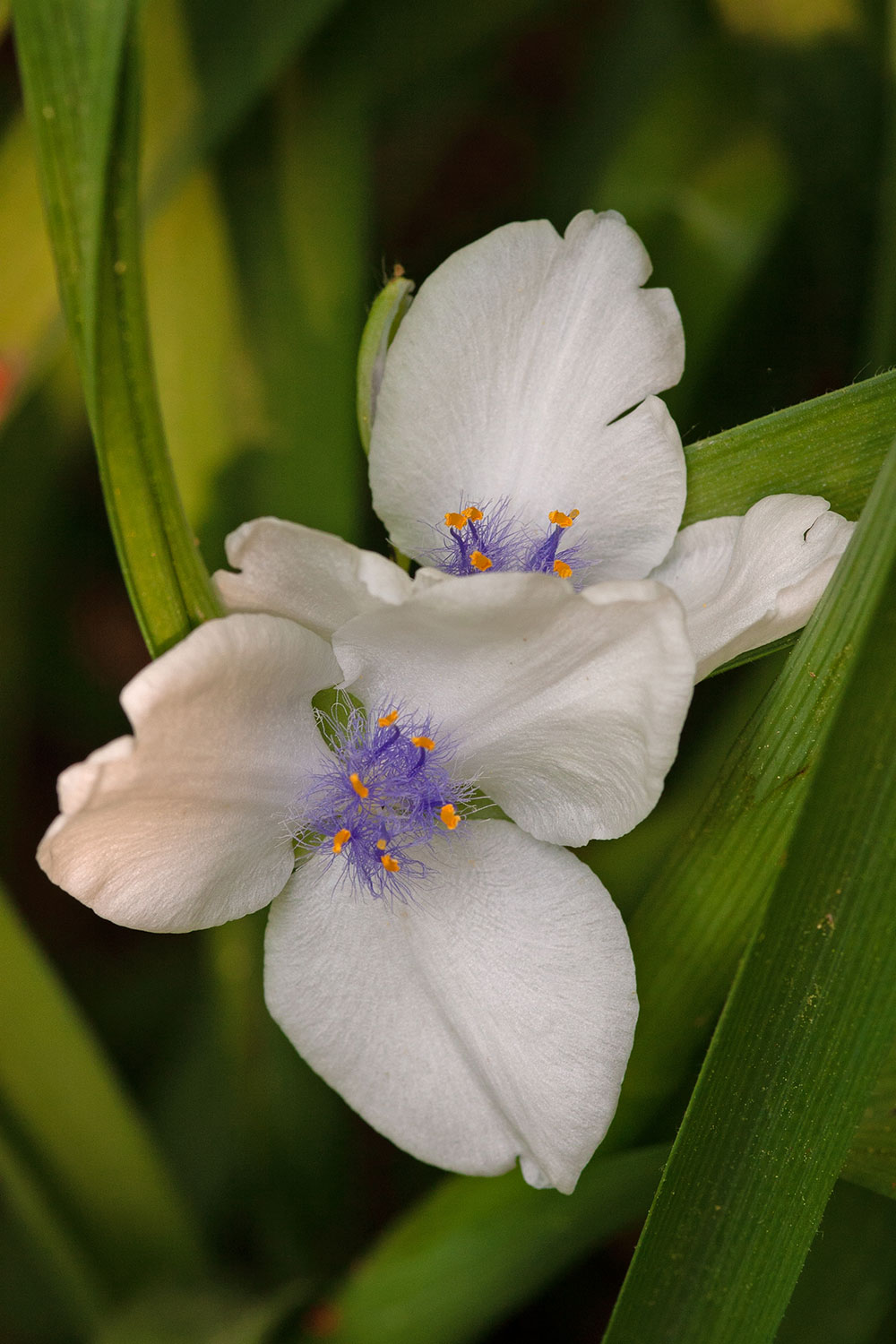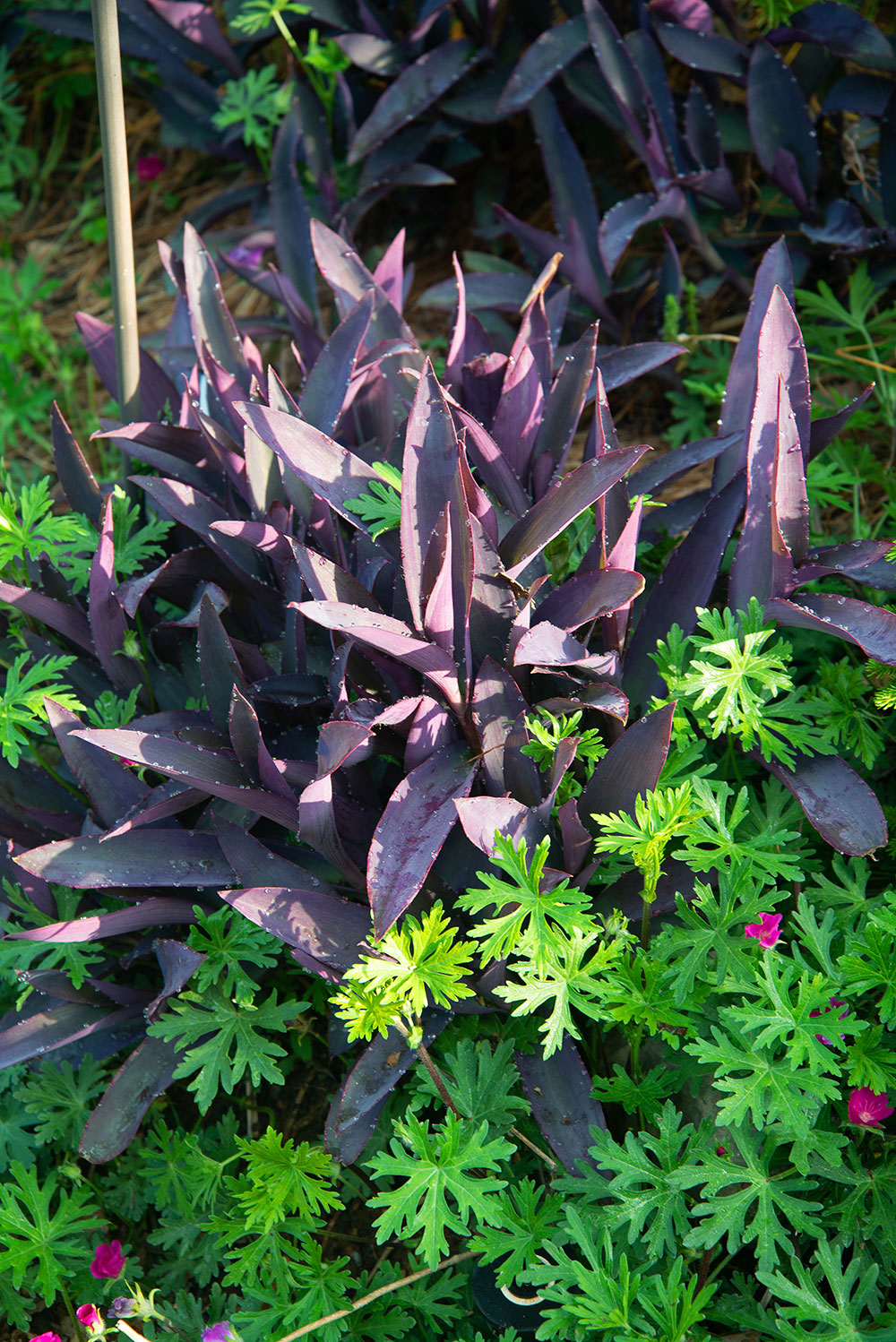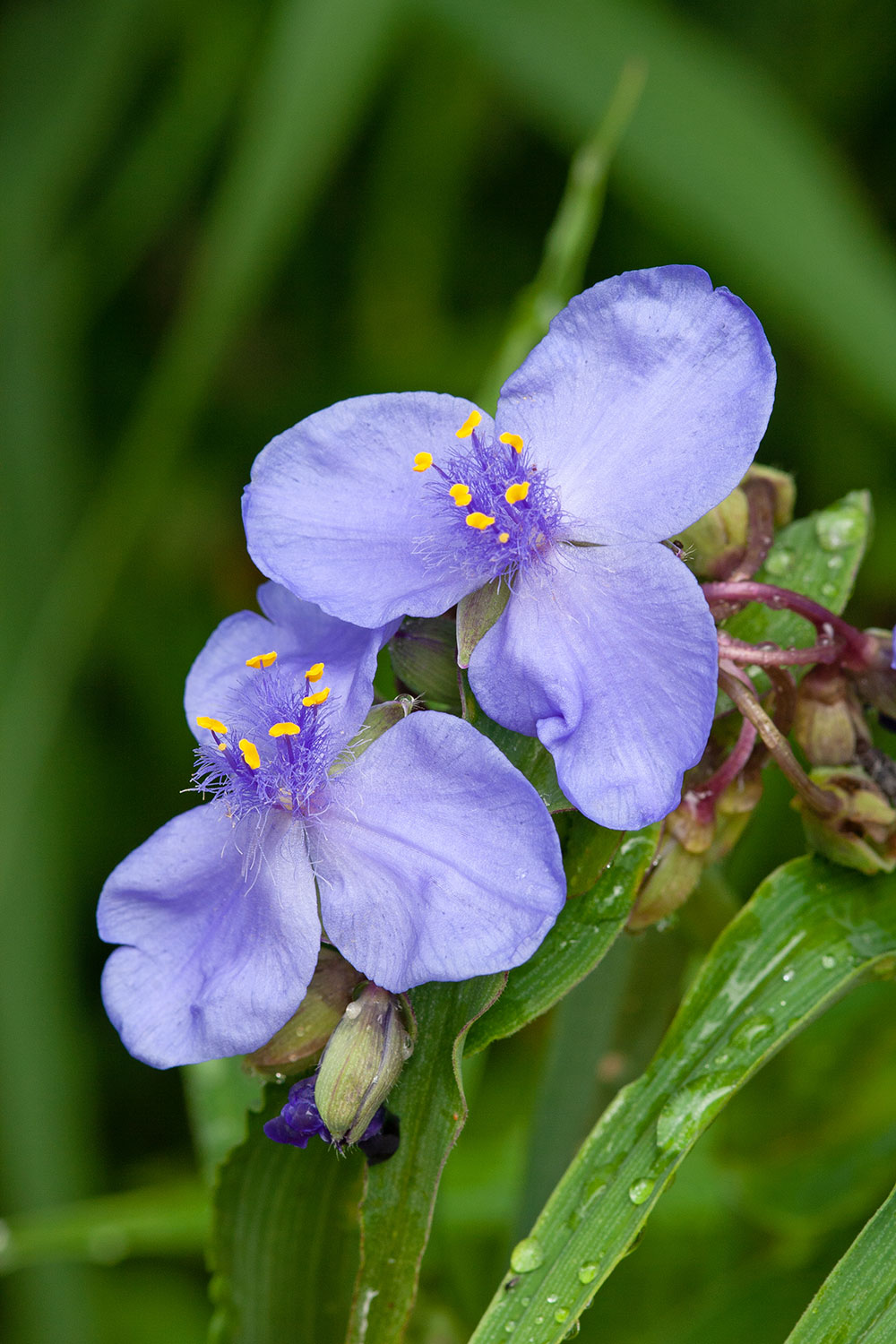In spite of their odd name, spiderworts (Tradescantia sp.) can be pretty additions to almost any landscape. With strap-like leaves that form mounds up to 24 inches tall, these perennials show off clusters of three-petal, 1- to 2-inch-diameter flowers typically dipped in shades of purple.
A spiderwort bloom only lasts a day, but each stem brims with many more blossoms to extend this spring flower show into the early summer. And after their first flush of floral color has finished, pruning the plants back will encourage another round of flowers later in the growing season.

The graceful beauty of ‘Osprey’
Spiderworts can be pretty dependable, too, being tough North American natives that, as a bonus, are deer resistant. They tolerate shady areas but will produce fewer blooms in such dim spots. A location in partial shade seems to suit these beauties best. Sunny sites that slip into slight shadows in the afternoon will also work, as long as the plants are watered regularly during the summer.
Wild species have variations in height, leaf shape, and bloom color, and plant breeders have created cultivars with even broader deviations, making spiderworts visually versatile for many landscape schemes. Here are a few examples to consider for your growing pleasure that can typically be found at local garden centers and certainly online:
Purple Profusion: This common cultivar flaunts deep purple blooms over mounds of handsome green leaves that top out at a restrained 12 inches tall. ‘Concord Grape’ and ‘J.C. Weguelin’ also offer comparable flower shows on compact plants.
Osprey: One of my favorites because it is a graceful beauty with soft white flower petals offset by center stamens dusted in a deep, dreamy purple. Such elegance is echoed in ‘Billberry Ice,’ which has a similar look but with blossoms slightly more shaded in lavender.
Blue and Gold: Also known as ‘Sweet Kate,’ this sassy spiderwort sports bright chartreuse-to-yellow leaves that create a colorful cacophony with its bluish-purple flowers. Like striped shirts and plaid pants combinations, you’ll either like it or hate it, but you won’t forget it.
Purple Heart: Do let the sun shine on this popular spiderwort because, strangely, the more it is exposed to sunlight, the darker its unique purple leaves become. Keep in mind, however, this selection is less cold hardy than other spiderworts, so consider using it as an annual (a common practice) or plant it in a container you can move to a protected place for the winter.
To Do in the Garden
May

‘Purple Heart’ showing off in a sunny border.
What’s in a name? For “spiderwort,” there’s plenty to unpack. For starters, spiderwort plants don’t attract creepy-crawly real spiders, which for arachnophobic gardeners should be a big
relief. The “spider” part of the name comes from the fact that, when sliced, the stems of this plant ooze a yucky liquid that
resembles threads of a spider’s web after hardening.
“Wort” is simply an Old English word for “plant,” especially one that has medicinal uses. This fits spiderwort perfectly because it was often sought out by Native Americans and Colonial settlers for its helpful herbal properties.
- This is a grand month for veteran and newbie veggie gardeners because it is prime time to start such standard summer delectables as tomatoes, pumpkins, squash, lima beans, okra, cucumbers, peppers, watermelon, eggplant, and green beans.
- Want to grow just a little bit off the beaten track with edibles? Now is also a good time to try your adventurous green thumb with sweet corn, kohlrabi, field peas, peanuts, Malabar climbing spinach, leeks, and turnips.
- In the ornamental garden, temperatures have reached a high enough comfort level now to start planting heat-loving bulbs such as gladioli, dahlias, caladiums, and cannas.
- Before the summer sizzle sets in, mulch around new and established plantings to help reduce wide fluctuations in soil temperatures and moisture content.
June
- If you enjoy starting summer flowers from seeds in the garden, soil temps are warm enough now to sow such pretties as sunflowers, zinnias, marigolds, cleome, gomphrena, blanket flowers, cosmos, nasturtiums, amaranth, and moonvine.
- Don’t think blossom end rot is just a tomato-centric disorder. Watermelons, squash, and peppers can come down with this ugliness, too. Since it is caused by stress related to wide fluctuations of soil temperature and moisture content, maintain at least a 3-inch mulch layer around these delectable edibles and keep them on a regular watering schedule.
- Garden Adventurer: Landscaping with Spiders
- Out & About in Wake County: May/June 2024
- Pursuing Greatness
- Splash Into Summer
- Go Big
- Lightship Neon
- Pay it Forward: Artspace
- Erica Chats: Spring into Summer Fashion
- Celebrated Spirits: SHIfT NEIPA
- Celebrated Spirits: Hummingbird
- Your Perfect Wake Picnic
- The Making of a Fashion Designer








